Introduction
Virtual reality (VR) technology has come a long way in recent years, offering immersive experiences for gaming, education, and various professional applications. With the increasing adoption of VR headsets, users are seeking ways to enhance their virtual experiences by integrating common tasks, such as web browsing, within the VR environment. Accessing a web browser in VR can provide convenience and unique functionalities, making it an interesting and relevant topic to explore. In this blog post, we will discuss several options for accessing web browsers in VR, their benefits, and potential use cases. By the end, you’ll have a better understanding of the available methods and how they can serve different purposes, from research projects to everyday use.
Why Use a Browser in VR?
Integrating web browsing capabilities into virtual reality (VR) environments has become increasingly desirable as VR technology continues to advance. This integration can benefit a wide range of applications, from research and education to gaming and professional collaboration. One example is a researcher, in my case, conducting a study comparing participants’ performance on an online auditory-visual test taken on a standard computer display versus the same test taken in a VR head-mounted display (HMD). In this scenario, a web browser in VR is essential for a controlled comparison.
In addition to research, a web browser in VR can enhance user experience and convenience across various applications. Gamers can access information or communicate with friends in the midst of gameplay without removing their headsets or leaving the VR environment. Similarly, professionals working in virtual collaboration spaces can seamlessly access online resources, boosting productivity and efficiency. Throughout this blog post, we will delve into several options for accessing web browsers in VR, discuss their benefits, and explore potential use cases, ultimately helping you determine the most suitable approach for your needs.
Option 1: Oculus Home Environment
The first VR web browser option I explored was the Oculus home environment (see Fig 1). I am using an Oculus Quest 2, so the experience might be different on other HMDs. This web browser worked well, and the functionality of the controllers and their interactions with the web browser were intuitive and easy to use. The only issue I encountered was the need for a specific environment background that could match the real-world test on the standard display.
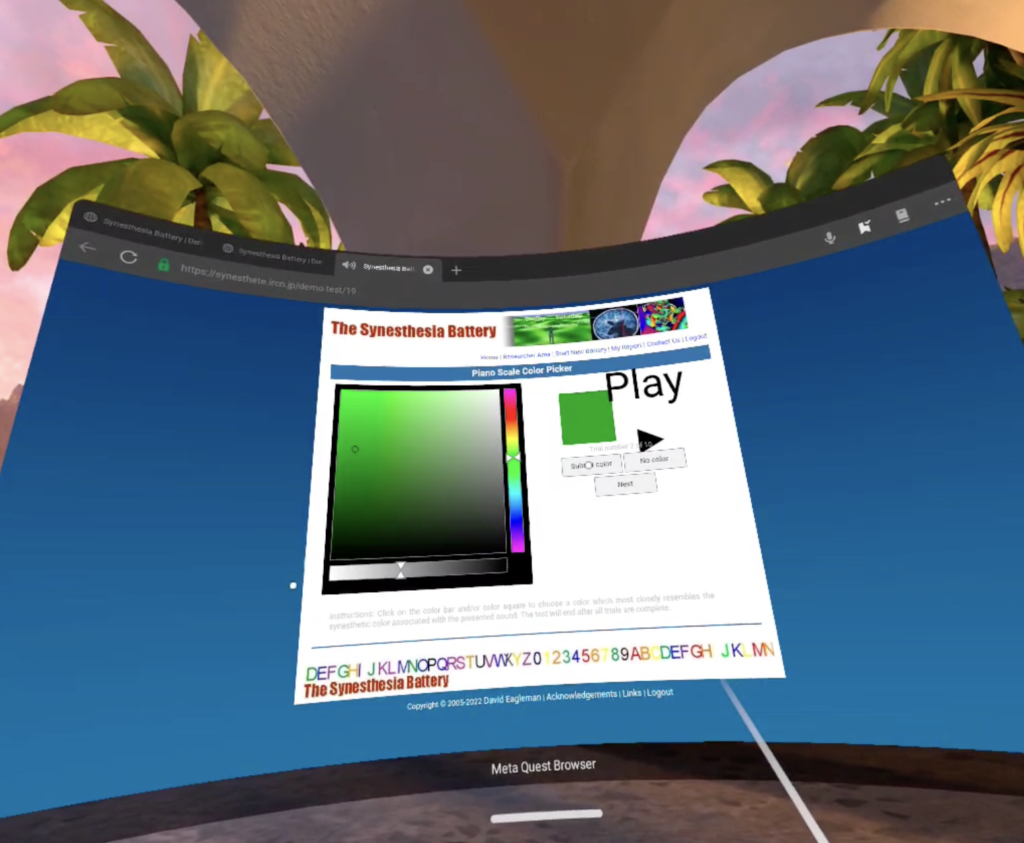
While there were limited options for changing the home environment on the Oculus Quest, I eventually found some alternatives that could help create the VR testing environment I proposed. SideQuest is a marketplace separate from the Oculus store, offering more apps for your Oculus headset. It features numerous games and apps from indie developers and provides a simple way to change some headset settings. I use commands to adjust the screen size and resolution when recording videos from my headset, presenting the video in a more standard format rather than the default mobile view. In SideQuest, creators who have developed their own home environments for the Oculus can upload them for others to use. I discovered one that might be suitable for my test environment. Since the real-world testing environment will be in a dark lab with a focus on the display, a dark room virtual environment (see Fig 2) might work for the VR test. I found this on SideQuest, along with other interesting home environments like the Twin Peaks – Red Room, which is very cool.
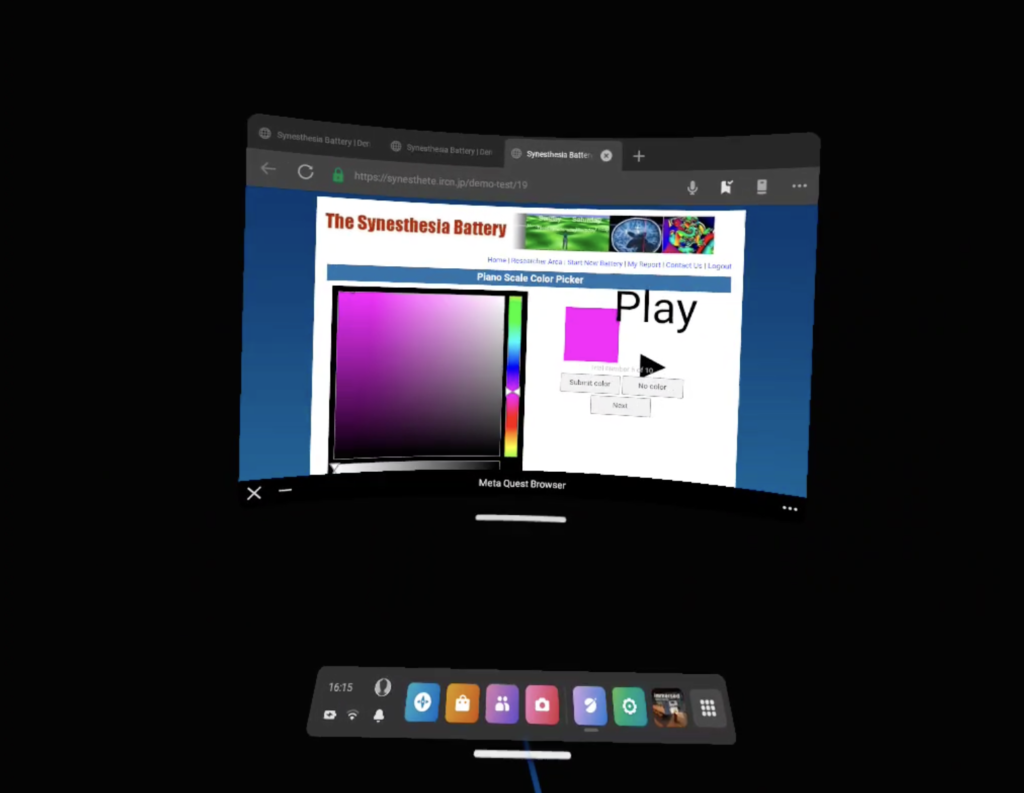
Another aspect of this option for conducting online tests in a VR web browser is the ability to create custom home environments and upload them to your HMD for personal use. I found a tutorial and template on SideQuest’s Official YouTube channel that guides you through creating your own home environment for your Oculus headset using Blender and other tools.
Option 2: Dedicated Apps for Remote Work
Another option for accessing a web browser in a VR space is to use a dedicated remote online workspace app. I found a couple of these on the Oculus store, and they are quite interesting. They offer more than just using a browser, as you can pair them with your computer and use a virtual version of your own computer. I will examine two apps, Immersed and Horizon Workrooms.
– 2.1 Immersed
Immersed (see Fig 3) is a nice app that is great if you need to collaborate or create a specific workspace with multiple screens. You need to download the desktop app and pair it with your HMD for it to work, so the setup is somewhat time-consuming. For my purpose, I don’t think this app works well, and there are a number of potential issues. Firstly, there is the issue of latency between what the actual computer is doing and what you hear and see on the HMD. While it wasn’t too bad when I tested it, in a different situation with a weak WiFi signal, it could cause problems. There were no options to customize the workspace environment; there were a few free options and other environments you could pay for, but they were not ideal for my needs. Since it is a third-party app and has paired with your computer, you don’t know what data is being accessed and stored, which might not be suitable for a testing environment. It is a nice idea, but I think it falls short for my needs and also compared to the next online workspace I will mention.
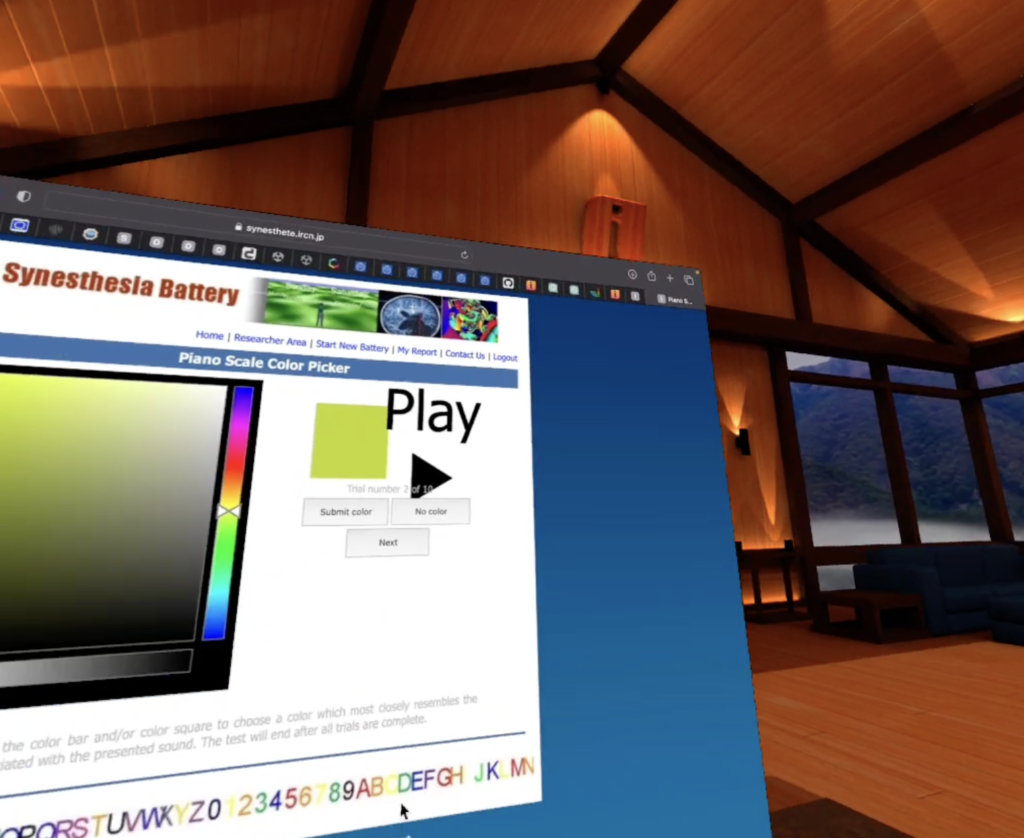
– 2.2 Horizon Workrooms
Horizon Workrooms, developed by Meta, is much cleaner and easier to use than Immersed. You can set up and start with a personal space much quicker, and you can also test out a collaborative space with multiple desks and a whiteboard where people can work together. To use a web browser in this space, it is similar to Immersed, where you need to download an app to your desktop and pair it with the VR app on the HMD. I would recommend this space for a collaborative workspace option, as it has some nice features and is very easy and intuitive to use. However, it still does not fit my needs for having a reliable web browser where I can change the background and manipulate other features.
Option 3: Integrating a Browser in a Unity App
The ideal way to access a web browser in many instances is within the game or application you are using. There can be many benefits to having access to a web browser in-game, such as having an outlet to chat with friends while playing, quickly googling a query about the game, or watching a brief tutorial. For a researcher like myself, using a web browser within an application I create using Unity would give me the most control over my environment and study design. I can completely create the 3D environment I want within Unity and determine how the player interacts with the environment and the web browser during the online test. You also have better capabilities to add more data capturing features, such as tracking head movement, controller movement, and reaction times. There are a few options for this that I found that work with Unity, which I will discuss now.
– 3.1 Vulplex 3D Web View
The first option I will mention is one that is available on the Unity Asset Store: the Vulplex 3D web view for Android. This seems to be a solid choice with all the features needed and options to customize aspects of the browser as needed. The issue with this option is the price: it costs 199.59 euros (at the time of writing), and there was no way for me to test it without buying the asset. The company has created different web browser assets for Android, Windows, Mac, and iOS, each costing between 149.69 – 349.29 euros. The specs of the web browser asset look good, but this is something that should not cost that much, and next, we will explore some alternatives to this which are free.
– 3.2 GitHub Builds
One of the great things about Unity is the community that builds and shares assets, either on the Asset Store or on GitHub. When searching for assets that will work in Unity to create an environment that would incorporate the use of a web browser, I came across a few different ones. Some were discontinued and not updated, like the popular Mozilla VR web browser that was discontinued in early 2022; read about it here.
I found a GitHub account by Ian Philips that created a web browser that could be used for an Android device (Oculus Quest) in Unity. It was called Unity Oculus Android VR Browser, and I downloaded the package and tested it out in Unity. This package was easy to set up in Unity and included a test scene, as shown in Fig 4 below. I had a few issues with this asset because instead of using the controllers for moving around the screen, you had to use your head, and the pointer moved in relation to your head movement. The controllers were active once a keyboard appeared when you needed to type, but it would be more intuitive to use the controllers for moving and pointing on the screen. The whole web browser felt a bit clunky with many buttons situated around the browser window indicating to move up, down, left, right, etc. There were also some issues with pop-up windows that wouldn’t appear and did not work too well with some JavaScript calls on the site I tested it on. While this is a great free asset that gives you the opportunity to use a browser in VR, and maybe someone with time and more Unity development experience could make this work for their purpose, it did not work for my intended use.
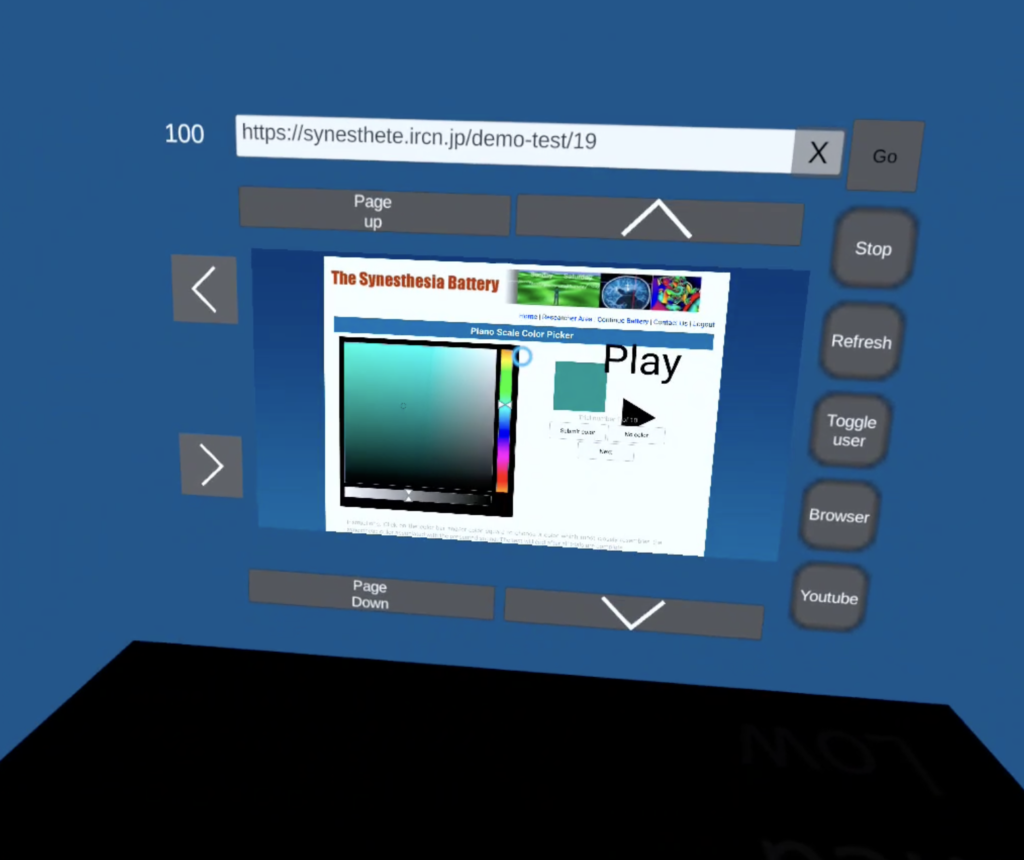
Conclusion
Throughout this blog post, we’ve explored various options for accessing web browsers in VR, including the Oculus home environment, dedicated remote work apps like Immersed and Horizon Workrooms, and incorporating a browser within a Unity app. Each option has its pros and cons, with the Oculus home environment offering intuitive interactions and the possibility of creating custom backgrounds, while dedicated apps provide collaboration features and Unity-based solutions offer maximum control over the environment.
For my specific needs, I have chosen to use the web browser in the Oculus home environment as it allows me to create a custom background that will mirror the real-life testing environment I will use. While the other options have their merits, the Oculus home environment best suits my project’s requirements. I hope this blog post helps you make an informed decision on the best approach for accessing a web browser in VR, depending on your unique needs. If you have any suggestions on other ways to use browsers with VR environments please share your thoughts. The VR community is continually growing and evolving, and I’m excited to see the innovative projects and applications that will emerge in the future.
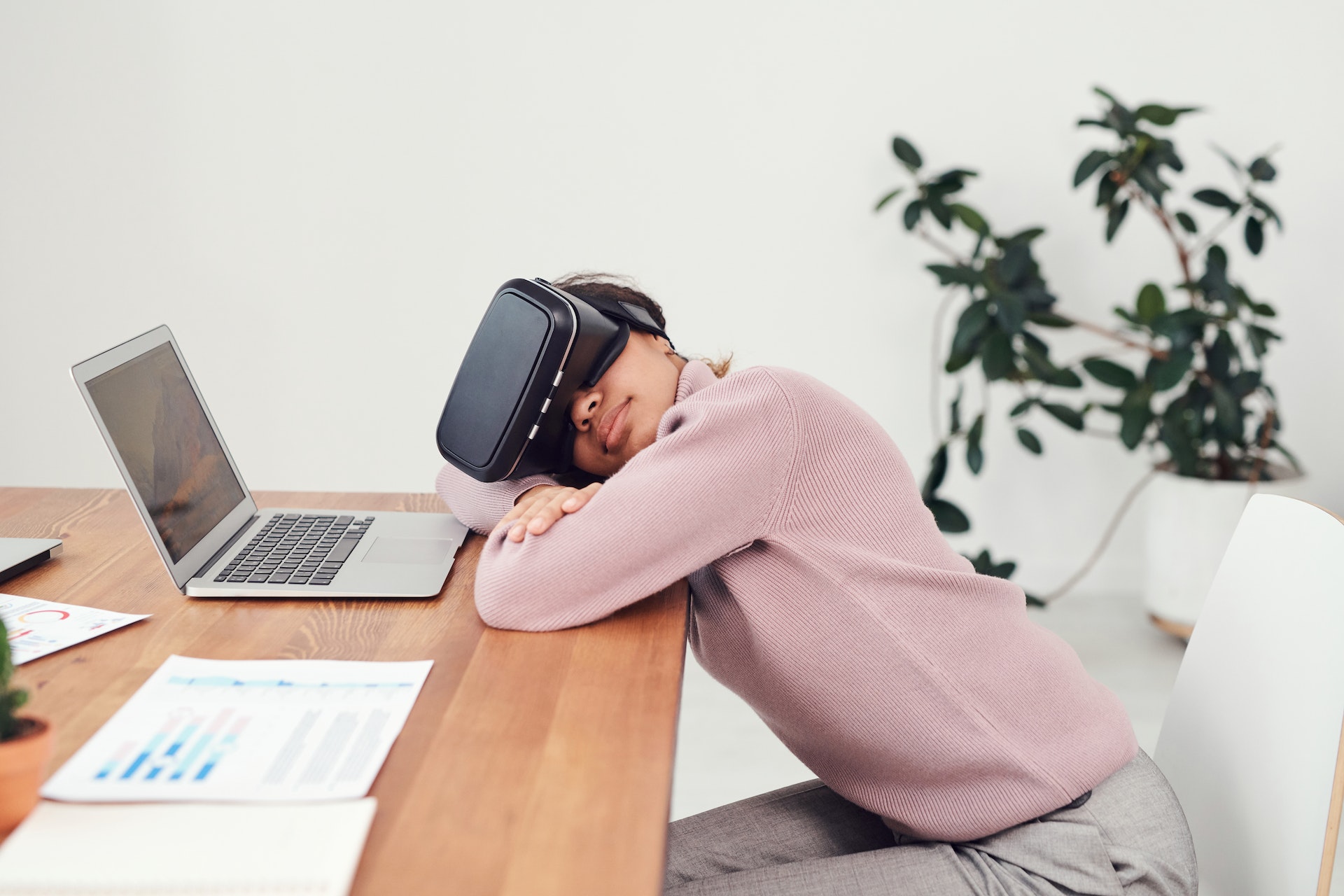
Leave a Reply